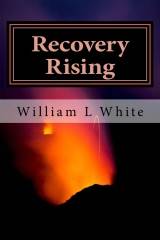 In my early career, I was adamant about abstinence as the only viable solution to alcohol and other drug (AOD) problems problems that I then universally framed as "addiction." At that time, declaring that moderated use was a legitimate, potentially effective strategy for some people with AOD problems would have been tantamount to waving the proverbial red flag in front of a bull. Thirty years later, I was writing articles advocating precisely that position. This dramatic transition in views is worthy of explanation.
In my early career, I was adamant about abstinence as the only viable solution to alcohol and other drug (AOD) problems problems that I then universally framed as "addiction." At that time, declaring that moderated use was a legitimate, potentially effective strategy for some people with AOD problems would have been tantamount to waving the proverbial red flag in front of a bull. Thirty years later, I was writing articles advocating precisely that position. This dramatic transition in views is worthy of explanation.
When I began clinical work in the addictions field, I assumed that what I was seeing in the treatment setting was simply the "tip of the iceberg" of the larger pool of such problems in the community. I further assumed that what I was learning about the nature of AOD problems in the clinical setting gave me authority to speak about such problems in the larger community. Thus, when the subject of moderated use arose, I could unequivocally declare that such a proposition was nonsense because such a strategy had so consistently failed among hundreds of clients whose life stories I had followed so closely. In retrospect, I was right, but I was also wrong.
I was right in the sense that I was accurately representing my professional experience and the personal experience of those I saw in treatment. But I was wrong in over-extending this narrow band of experience far beyond the world to which it was applicable. One of the most important lessons I would learn in my professional career was that alcohol and drug problems in the community look different than such problems in clinical settings. In community studies (e.g., epidemiological surveys), the majority of alcohol and drug problems are mild to moderate in severity and resolve themselves without professional intervention or involvement in formal recovery support groups. The scientific verification that mild to moderate alcohol and even some severe AOD problems were resolvable through what researchers christened maturing out, spontaneous recovery, or natural recovery raised some provocative questions.
Why can't everyone just rein in their alcohol or drug use when it gets to be a problem? Why do we even need this thing called addiction treatment? The answer was that those in clinical settings shared characteristics that reduced the likelihood of such natural recovery. Compared to those with AOD problems in community studies, those entering clinical settings present with greater personal vulnerability (family histories of addiction, early age of onset of use, developmental trauma, etc.), greater problem severity (severe dependence) and complexity (co-occurring medical, psychiatric, social and/or legal problems), greater personal and environmental obstacles to recovery, and lower recovery capital (assets that can aid recovery initiation and maintenance). It turns out that comparing those who succeed and those who fail at the moderated resolution of AOD problems is indeed a comparison of apples and oranges.
One of the ethical mandates of addiction professionals is to practice within and only within the boundaries of our education, training, and experience. An addendum to that mandate is to recognize that our education, training, and experience represent a limited part of what is known about AOD problems, addiction treatment, and recovery. Such a recognition calls for professional humility and holding all of our opinions on probation pending new discoveries in the field and new learning experiences. Many parties can be harmed when we mistake a part of the truth for the whole truth.